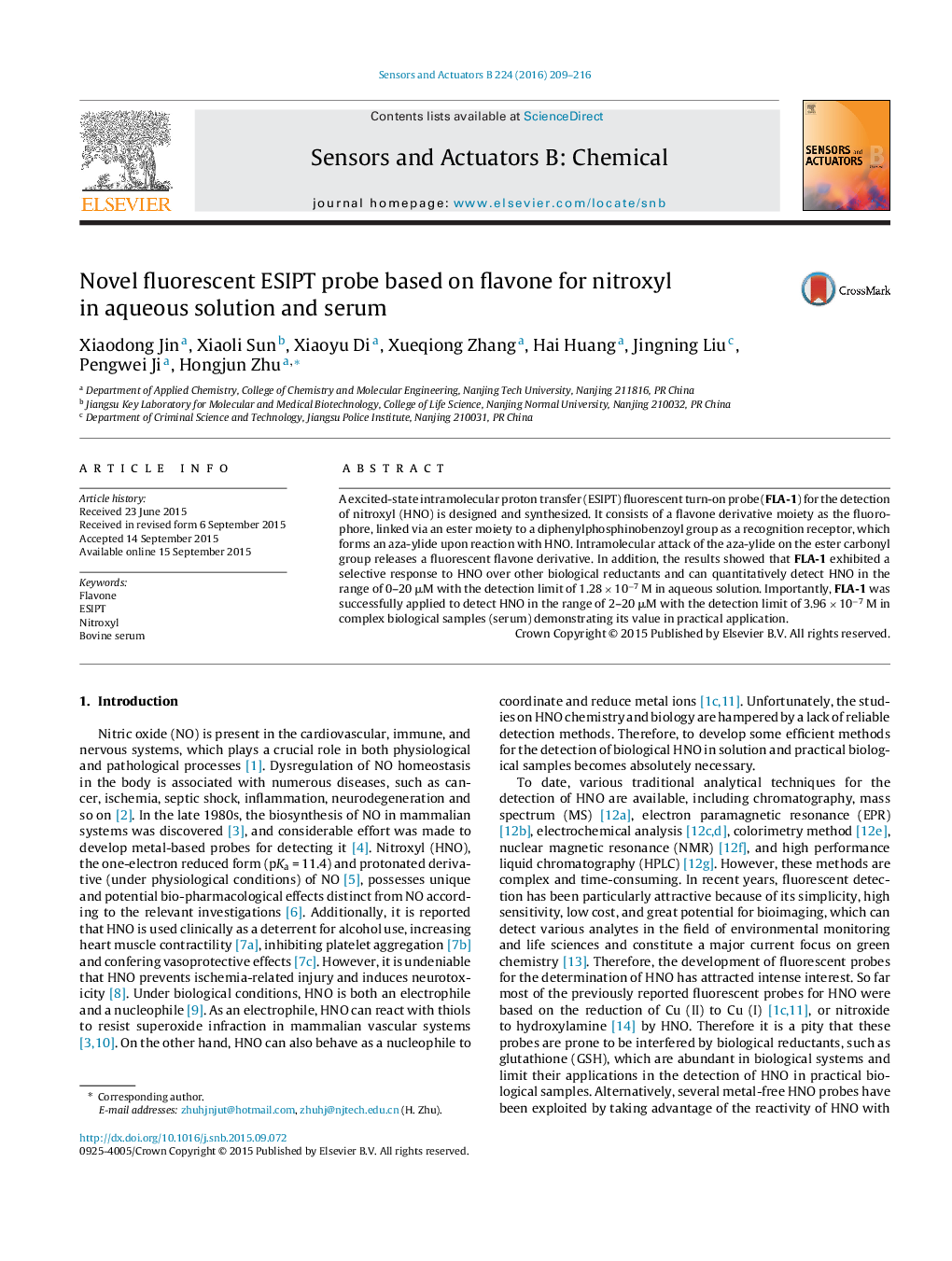| Article ID | Journal | Published Year | Pages | File Type |
|---|---|---|---|---|
| 750479 | Sensors and Actuators B: Chemical | 2016 | 8 Pages |
•A ESIPT turn-on metal-free fluorescent probe for sensing nitroxyl (HNO) was developed.•Large emission spectral shift from weak 404 nm to strong 520 nm in responding to HNO, as a consequence of the ESIPT turn-on.•The probe exhibits a selective response to HNO over other biological reductants in solution.•The probe was applied for quantitative detection of HNO in bovine serum with satisfactory results.
A excited-state intramolecular proton transfer (ESIPT) fluorescent turn-on probe (FLA-1) for the detection of nitroxyl (HNO) is designed and synthesized. It consists of a flavone derivative moiety as the fluorophore, linked via an ester moiety to a diphenylphosphinobenzoyl group as a recognition receptor, which forms an aza-ylide upon reaction with HNO. Intramolecular attack of the aza-ylide on the ester carbonyl group releases a fluorescent flavone derivative. In addition, the results showed that FLA-1 exhibited a selective response to HNO over other biological reductants and can quantitatively detect HNO in the range of 0–20 μM with the detection limit of 1.28 × 10−7 M in aqueous solution. Importantly, FLA-1 was successfully applied to detect HNO in the range of 2–20 μM with the detection limit of 3.96 × 10−7 M in complex biological samples (serum) demonstrating its value in practical application.
Graphical abstractFigure optionsDownload full-size imageDownload as PowerPoint slide
